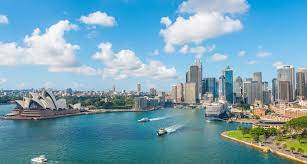The city of Venice has one of the most luxurious and Edwardian appearance than any other place in the world. Depending on the budget of the traveler, the district of Venice can be a paradise or a utopia.
Venice is well known for its canals, the greatest of which are the Grand Canal and the Rialto Canal, linked to the main city by the world’s longest bridge. These vast water ducts let in huge amounts of humid fresh air that keeps the canals fresh for transport all year round. Venice is also known for its ideal climate throughout the year. While it may have occasional downpour, it normally pales in comparison to other cities worldwide.
The canals are not simply roads in the sky. They link up to many other waterways, lakes, and rivers including the Adriatic, the forks of the Po River, the Yarra River, off the English coast near the Victorian Falls in the lap of the Black Sea, the murky reckonings near the island of Murano, and even theimity of the islands of Alghero and San Giorgio.
If you have a desire to experience Venice in all its glory then the advice will be simple. Practically every single day is a good day to go for. Start with a boat cruise in the evening to take in the entire canal system. Whether you do a sunset cruise by moonlight or watch the procession of the Twelve Months of Plenty at sunset, it is a experience that you will never forget.
Most Grand Canal vacations are fairly easy to find. Many of the hotels will have ample experience with customers that come from all over the world to enjoy the ideal Venice experience. They have special promotions and offers to reward first time visitors and old hands alike. The has daily water buses that transport the holiday makers to different points along the canals. The water bus stops can usually be found controlling either one side of the canal.
Places of interest for Grand Canal vacations include many points around Venice. At noon, you can walk from one side of the Bell Tower to the other. It is a good idea to book your taxi tour in advance. The river is currently too shallow for the boats to navigate, so booking a taxi tour for a first time trip can prove to be practical. A yellow cab can be found near the entrance to the marketplace.
Did you know that St Mark’s Square is actually the biggest square in the world? There are many facets to the Grand Canal. In the evenings, shops overrun the once magnificent square. A circle of shops is known as the©Formentera,” which is a symbolic location of transformation.” It is said that when you visit theseformentera, you are literally transformed.
One of the most spectacular sites can be found at the end of the Grand Canal.Before the Bell Tower was built, the river connected to the Castle’s former lagoon. It was a dominant landmark, controlling all approaches to the city.
Dibaca juga : Texas Holdem Poker
One of the interesting features of theseformentera is the way they were built. According to an account byAmboise Kelly, who was thearchitector of the Grand Canal, they were first dug out by one man, then gradually joined by a team of lifters working for him from beneath the massiverows supported by many horsemen andmen on boats. According to another account, the canal was first dug by Lady Elisabeth session, soon after her marriage in 1632. Inthe Madrid direction and it turned out to be Lady Elisabeth session’s bed-time.
The formentera were originally built to access a supply of fresh water, to be delivered by a new bridge to the old city.
Temporarily, the supply of water to the city was interrupted in 1729 by an North Sea tidal disturbances. It was again restored in 1760. The tidal disturbances were so violent that the ships were nearly grounded, and some of the lives of the sailors were lost. In 1810, a serious flood occurred, and the formentera became a public hazard. The tidal waves destroyed most of the wooden buildings nearby, and also threatened the lives of the servicemen serving the city.
In 1832, a new levee was built, and the old site soon grew into a growing residential area. After many years of neglect, and growing popularity of the sea, a new home was put on the land.
The project consisted of going up and back along the old canals, and also involved excavating part of the ancient settlement. What they found showed that the area had indeed been settled on before the great tidal wave. The inhabitants of Venice had by then built three new districts in the area, and two of these had been destroyed by the tidal waves.
